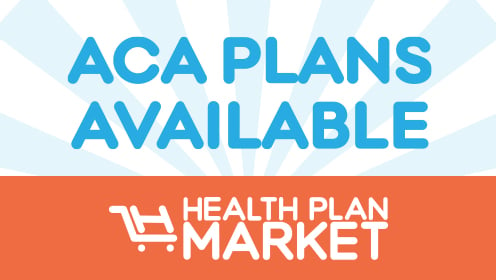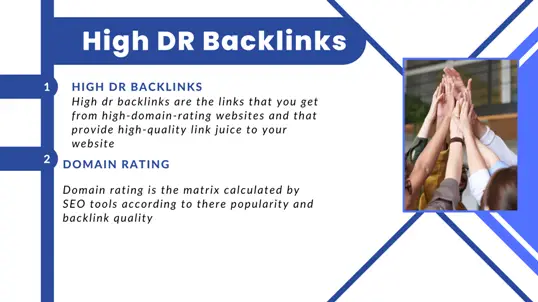If you’re searching for an individual health insurance plan, you can compare coverage and pricing on the ACA marketplace, created by The Affordable Care Act (ACA) in 2010.
The ACA, sometimes called Obamacare, changed the health insurance landscape by giving most Americans multiple individual insurance options.
Read on to learn everything you need to know about buying individual health insurance.
What health benefits you’re entitled to
Health plans offer a comprehensive set of 10 essential benefits, including:
- Emergency
- Mental health
- Prescription drug
- Outpatient
- Prenatal and maternity care
- Hospitalization
- Preventive care
- Lab tests
- Rehab services
- Vision and dental for children
Insurance companies can’t cap the dollar amount of benefits you receive in a year or over a lifetime. However, insurers must cap your maxium out-of-pocket costs for the year.
How to choose a health insurance plan
When selecting a health plan, you need to assess your healthcare needs, review coverage options, crunch the numbers and choose the plan that makes the most sense for your finances and your health.
Ask yourself these questions to determine your needs:
- How often do you see the doctor?
- What types of healthcare will you need in the next year?
- What prescription drugs do you take?
- What hospitals and doctors do you want to see?
From there, you’ll want to find a plan that offers the coverage you need at a price that fits into your budget. Compare at least carriers and their options before choosing a policy.
If nothing suits your needs, you may also consider other types of health insurance coverage:
- Group health insurance: Your employer selects the plans and health insurance companies, while also covering a bulk of the premium cost. You enroll at work, usually in the fall during your employer’s open enrollment period.
- Medicaid and the Children’s Health Insurance Program (CHIP): These federal-state plans have low-income requirements.
- Medicare: Mostly for people age 65 and over.
- Catastrophic health plans: These plans are only available to people under 30 and those who are facing severe financial problems. Catastrophic health plans have low premiums, but high out-of-pocket costs. They also offer all the benefits found in a standard ACA plan.
- Short term insurance: These low-cost, low-coverage plans are available to most people, though a handful of states forbid them. Short term plans generally don’t offer enough coverage — plans don’t include mental health and maternity care.
How to prepare for open enrollment
You can buy an individual health plan during the annual open enrollment period, unless you have a special circumstance. For instance, losing your job, getting married or having a baby make you eligible for a special enrollment period. However, if you don’t have a qualified life event, open enrollment is the only time you can make changes to your health insurance coverage.
How to get health inusrance plans from your state marketplace
The federal government’s HealthCare.gov website has links to state health insurance marketplaces. These plans offer subsidies to reduce your costs if you meet income requirements.
If your income qualifies you for discounts or lower out-of-pocket costs, you can fill out the application to see if you’re eligible for assistance. You’ll also be able to compare health plans from private insurance companies in your area.
Health plans sold in the marketplaces are categorized according to how much of the health care costs the insurer pays and how much the consumer pays. Generally the higher the out-of-pocket costs — the more you pay in deductibles, coinsurance and copayments — the lower the premium.
Types of marketplace health plans
Here are the health plan categories in the ACA marketplace, going from those with the least to most expensive premiums:
| Type of plan | Percent of health care costs the insurer pays | What you pay |
|---|---|---|
| Bronze | 60% | 40% |
| Silver | 70% | 30% |
| Gold | 80% | 20% |
| Platinum | 90% | 10% |
Bronze plans have the lowest premiums, but the most out-of-pocket costs. Platinum has the highest premiums, but lowest out-of-pocket costs.
Keep in mind these are general categories and the projected out-of-pocket costs are averages. Plans in the same metal category might achieve the cost split in different ways. Two Bronze plans, for instance, might have different deductibles and co-insurance levels. However, their overall out-of-pocket costs are about the same.
Plans in the same metal level might also be structured differently. One Bronze plan might be a health maintenance organization, and another might be a preferred provider organization. Depending on the type of plan, you might have free access to any provider in your network or you might need to get a referral from a primary care physician.
Nearly half of individual health plans are health maintenance organization (HMO) plans. Exclusive provider organization (EPO) plans make up one-third of individual plans. PPOs, which are the most common type of plan in the employer-sponsored market, only make up a small portion individual plans, according to eHealth.
You can buy marketplace plans over the phone, through paper applications or online. Some states also hold enrollment fairs.
How the special enrollment period works
During the special enrollment period, you can go to healthcare.gov and enter your information. If your state has its own marketplace, healthcare.gov will take you to that website.
Once there, you will enter where you live and your household size and income. The website uses this information to provide you with your plan options and how much they cost, accounting for subsidies. ACA subsidies help lower the costs of ACA plans for people who qualify.
The ACA provides tax credits to help pay for a marketplace plan for people who are up to 400% of the federal poverty level. California further expanded the eligibility to 600% of the federal poverty level.
Subsidies can save you hundreds of dollars a month. The Centers for Medicare and Medicaid Services (CMS) estimated a 27-year-old at 150% of the federal poverty level pays an average of $0 per month for the lowest-cost Silver plan.
People with incomes below 138% of the federal poverty level may be eligible for Medicaid. That’s $13,590 for an individual and $27,275 for a family of four.
Can I buy health insurance that is not Obamacare?
There are plenty of health plans available directly from insurers, without going through a marketplace. In fact, some insurers only sell policies outside the marketplace in some states.
Plans sold outside the marketplace are still categorized by metal tiers, and they still must offer the same minimum benefits to qualify as sufficient coverage under the ACA. But you might find a plan with a wider network or a better price. Remember, though, you can’t qualify for tax credits or subsidies for premium discounts or lower out-of-pocket costs when you buy outside the marketplace.
So, if your family income is below 400% of the federal poverty limit, you may want to stick with the ACA marketplace.
How health plans are structured
Health plans are structured differently, and it is important to know the difference so you get the one that is best suited for your needs:
- Health Maintenance Organization (HMO): With an HMO, you choose a primary care physician who coordinates your care. You’re generally limited to a network of doctors and hospitals, but you typically pay a low copayment for each office visit. The plan generally doesn’t cover care outside of the network except in special circumstances.
- Preferred Provider Organization (PPO): A PPO gives you more flexibility than an HMO. You can see specialists without a primary care physician referral. You pay less to see in-network doctors, but you do have the opportunity to get care out-of-network. However, it usually costs more.
- Exclusive Provider Organization (EPO): Like HMOs, EPOs require members to stay within the plan’s provider network. And like PPOs, EPOs also let you see specialists without getting a primary care provider referral.
- Point Of Service (POS): A POS plan is a little of both. It operates like an HMO if you stay within the network, but gives you the option of using out-of-network doctors. Typically a POS plan requires you to get a referral to see a doctor outside of the network.
You can also pair a high-deductible health plan with a health savings account (HSA). This has a high deductible before the insurer pays for health care services, but you can use money from the HSA for out-of-pocket medical expenses. Contributions you make to the account are tax deductible and unused money rolls over to the next year. You get to keep the account even if you change health plans, and you can use the money for non-medical expenses in retirement.
When deciding on a plan, you’ll want to dig into the details of what the health plans cover. For instance, how will the plan cover the prescription drugs you take? Make sure the healthcare providers you want to use are in the plan’s network. Otherwise you will pay more out of pocket or may not have coverage to see them.
In addition to reviewing the premium, you’ll pay for the plan, estimate how much you’ll pay out of pocket for the amount of healthcare you expect to use in the next year.
If you rarely need medical care, it probably makes more sense to choose a plan with a higher deductible and lower premium than to pay a high premium for a plan with a low deductible. However, if you have a family and expect will need at least some healthcare services, a lower deductible could be the best choice.
Frequently asked questions
How can I get individual health insurance?
Can I buy health insurance on my own?










